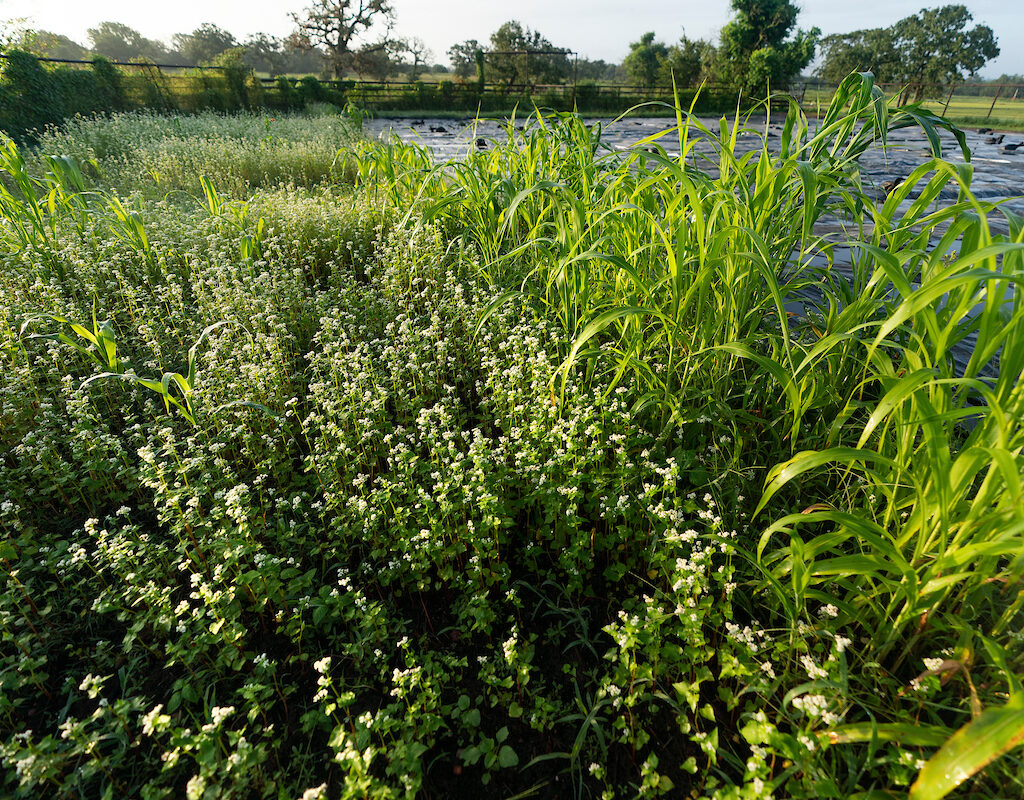Weed Control

Learn About
Weed Control
Publications
Programs
Courses
All Resources on Weed Control
- Publication
Ponds are nutrient sinks-a place where incoming nutrients from the watershed accumulate over time. This makes ponds the perfect place for aquatic vegetation to grow, often negatively impacting evaporation rates, recreation, aesthetic value, fish, and wildlife habitat. Preventing aquatic vegetation from entering or becoming established in a pond can save time and money in the […]
- Publication
This publication outlines the primary weed pests of spinach, integrated weed management strategies, and recent research findings as they influence current best practices for controlling weeds in spinach.
- Publication
Get a beautiful lawn with overseeding! Our free guide walks you through choosing the right grass seeds, planting, maintenance, and more. Download your copy today!
- Publication
Annual bluegrass is one of the most problematic weeds of turf grass lawns, athletic fields, and golf courses. However, this weed can become resistant if you rely on a single type of herbicide to control it. This publication explains how resistance develops and how to select the herbicides or combinations of herbicides that will best […]
- Publication
Yellowing of wheat leaves in Texas is a problematic symptom during winter and early spring. This publication will help you determine if it is caused by nutrient deficiency, herbicide injury, freeze damage, moisture stress, disease, and insect issues’ some combination thereof. You can then select an appropriate management strategy. (5 pages)
- Publication
This 2-page quick reference guide for common rangeland and pasture herbicides includes information on active ingredients, trade names, grazing restrictions, hay harvest restrictions, and rainfast intervals.
- Publication
The tropical sod webworm can cause significant damage to managed turf very quickly. This publication explores this pest's life cycle and geographic distribution as well as how to identify the larval stage and the damage it causes. Sources for treatment recommendations are included. (2 pages)
- Publication
Get a beautiful, healthy warm-season lawn with our free warm-season turfgrass mowing guide! Based on the latest research, get tips on mowing height, schedules, and mower maintenance. Learn how to save time and get the best results, no matter your equipment. Download your copy today!
- Publication
It can be difficult for homeowners to differentiate between herbicide products available to them. This publication was created as an overview of several active ingredients commonly found in widely-available herbicides and simple tips for product selection.
- Publication
Turfgrass on athletic fields needs to meet several requirements. It needs to be able to withstand heavy traffic, recover quickly, and be aesthetically pleasing. Bermudagrass provides an excellent option for athletic fields, especially for ones in the climactic transition zone. This fact sheet outlines the suitability of bermudagrass for these fields and offers recommendations for […]